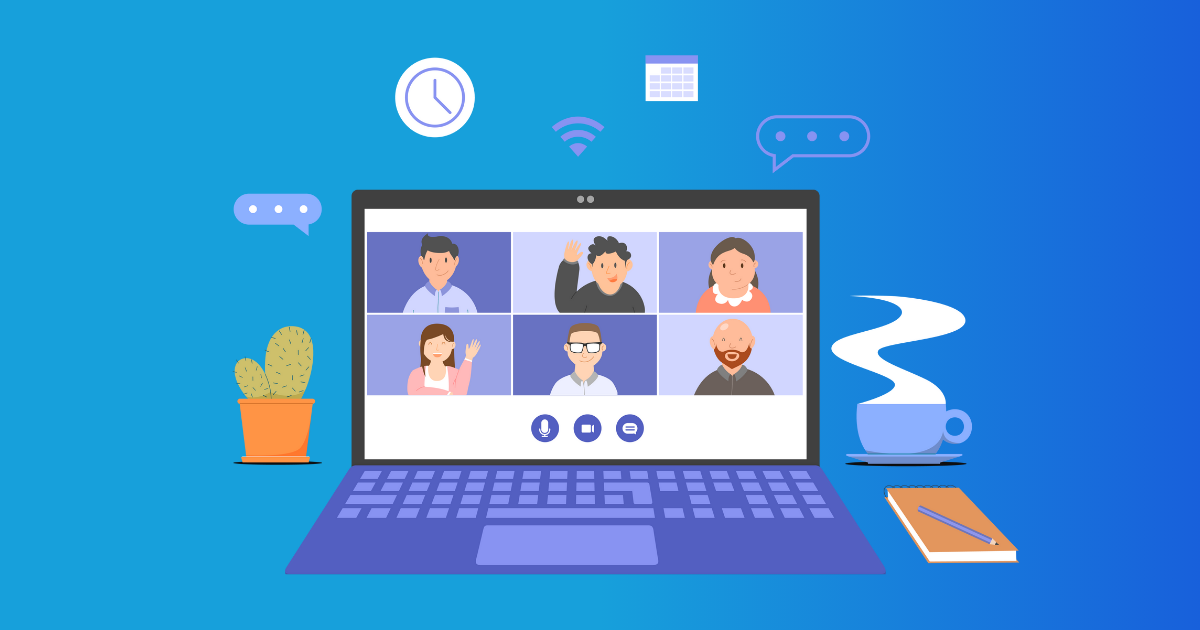Table of Contents
- Why Your Camera is On But Not Visible in Jitsi
- Common Causes of Camera Visibility Issues
- How to Check Permissions and Settings
- Real-World Example
- How to Fix Jitsi Mic Active Not Working Issues
- Common Reasons for Microphone Problems
- Step-by-Step Mic Troubleshooting in Jitsi
- Real-World Experience
- Understanding and Fixing Jitsi Hidden Video Problems
- Why Does Jitsi Hide Video?
- How to Troubleshoot Hidden Video
- Case Study
- Additional Tips for a Better Jitsi Experience
- Conclusion
If you use Jitsi Meet for video calls, you might have faced frustrating moments when your camera or microphone shows as active but others can’t see or hear you. This problem is common, especially for beginners or those new to online conferencing tools. This Jitsi Meet Guide will help you understand why your “camera on but not visible” or “jitsi mic active not working” problems happen and how to fix them step by step, so you can get back to smooth meetings.
Many factors can cause your video to be hidden or audio not to transmit correctly in Jitsi. Sometimes it’s as simple as an incorrect browser permission, and other times it’s due to more technical issues like hardware conflicts or software bugs. Throughout this guide, I’ll share real-world experiences and practical fixes that have worked for users like you.
Why Your Camera is On But Not Visible in Jitsi
When you join a Jitsi Meet call and see your camera icon active, but your video isn’t visible to you or others, it means something is blocking the video stream from properly reaching the app or the other participants.
Common Causes of Camera Visibility Issues
- Browser permissions denied: If the browser hasn’t been allowed access to the camera, Jitsi can’t display your video even if the icon shows active.
- Other apps using the camera: Some apps lock camera access, preventing Jitsi from grabbing the video feed.
- Jitsi settings misconfiguration: Sometimes the camera input device is set incorrectly or disabled within Jitsi.
- Browser or device glitches: Temporary bugs in the browser or device may cause the camera feed to fail.
- Outdated browser or drivers: Old software can cause compatibility issues.
- Privacy or security extensions: Browser extensions like ad blockers or privacy guards might block camera streams.
How to Check Permissions and Settings
- Verify browser permissions:
On Chrome or Firefox, click the padlock icon in the address bar when on the Jitsi site and confirm the camera is allowed. - Close or disable conflicting apps:
Software like Skype, Zoom, or antivirus webcams locks may block camera access. Close these apps before joining Jitsi. - Switch Camera Device in Jitsi:
Click the three dots menu > Settings > Devices > Camera, and select the correct camera if multiple are listed. - Update your browser:
Use the latest version of Chrome, Firefox, or any supported browser. - Restart the browser or computer:
This often clears hardware resource conflicts.
Real-World Example
One user reported their camera worked fine in other apps but never showed in Jitsi calls. Checking Chrome’s permissions revealed camera access was blocked initially. Once enabled, the video appeared instantly, solving the “camera on but not visible” issue.
How to Fix Jitsi Mic Active Not Working Issues
If your microphone shows as active but others can’t hear you, the problem might relate to device settings or application access.
Common Reasons for Microphone Problems
- Permission issues: Like the camera, microphone access might be blocked by your browser.
- Incorrect device selection: Jitsi could be using the wrong mic input.
- Muted mic accidentally: Check if the mic is muted inside Jitsi or on your device.
- Hardware issues: Faulty microphone hardware or disconnected devices.
- Conflicts with other applications: Audio input devices may be locked by other software.
- Outdated audio drivers: Drivers that are not updated cause problems transmitting sound.
Step-by-Step Mic Troubleshooting in Jitsi
- Allow microphone permissions:
Navigate to the browser’s site permissions and ensure the mic is allowed. - Select the correct microphone:
In Jitsi, use Settings > Devices > Microphone and pick the microphone you want. - Unmute yourself in the meeting:
Click the mic icon to make sure it’s unmuted. - Test your microphone outside Jitsi:
Use your operating system’s sound settings or apps like Voice Recorder to confirm your mic works. - Close other apps that might use mic:
Apps like Discord or Teams can interfere. - Update audio drivers and browser:
Use the latest drivers and browser versions for compatibility. - Try a different browser:
Sometimes switching from Chrome to Firefox or vice versa clears hidden conflicts.
Real-World Experience
In a recent troubleshooting case, a user’s mic was active but silent due to a muted setting in Windows sound control, even though Jitsi indicated the mic was on. Adjusting Windows settings and restarting fixed the issue.
Understanding and Fixing Jitsi Hidden Video Problems
Hidden video in Jitsi means the video stream is not visible during a call even if the camera is active and permissions are correct. This can frustrate many users when they think the system is working but video doesn’t show up.
Why Does Jitsi Hide Video?
- Low bandwidth situations: Jitsi automatically adjusts video quality or disables video when connection speed is poor.
- Grid or layout settings: Certain views or pinned participants can hide videos.
- Browser caching or glitches: Browser cache problems may cause display bugs.
- Incompatible browser or device: Older devices or browsers can struggle rendering video.
- Software bugs or recent updates: Sometimes upgrades introduce unexpected behavior temporarily.
How to Troubleshoot Hidden Video
- Check your internet speed:
Use speed test sites to ensure you have adequate bandwidth. For HD video calls, at least 2 Mbps upload/download is recommended. - Change the video layout:
Switch between tiled view and speaker view by clicking the layout icon to check if video becomes visible. - Clear browser cache:
Remove cached data for Jitsi and reload the page. - Disable browser extensions:
Try disabling ad blockers or privacy tools. - Update your browser or switch:
Ensure you use up-to-date, supported browsers. - Restart the call:
Leave and rejoin the call to reset the video streams. - Ask others to check their video feeds:
Sometimes the issue might be on the other end.
Case Study
During a company-wide Jitsi call, several participants showed “hidden video.” The IT team advised switching to speaker view and disconnecting then reconnecting cameras. This simple approach restored video visibility without deeper tech fixes.
Additional Tips for a Better Jitsi Experience
- Use wired connections where possible: Wired internet connections provide steadier speeds than Wi-Fi.
- Keep your device drivers updated: Both video and audio device drivers affect call quality.
- Regularly update Jitsi browser version: Jitsi Meet is web-based; browser updates improve stability.
- Manage multiple input/output devices carefully: Disable webcams or microphones you do not use to prevent conflicts.
- Control bandwidth by disabling HD video: When connection is poor, choose “Manage video quality” and lower video settings.
- Review privacy/security settings: Make sure your browser or antivirus is not over-restricting camera or mic access.
- Check Jitsi system status: Sometimes Jitsi servers or your network might have temporary issues.
Conclusion
Camera and microphone visibility issues in Jitsi Meet often come down to permissions, settings, and hardware conflicts. Following this Jitsi Meet Guide, you now know how to identify and fix common problems like “camera on but not visible,” “jitsi mic active not working,” and “jitsi hidden video.” Testing permissions, updating browsers, selecting the correct devices, and adjusting layouts solve most problems.
These straightforward solutions come from hands-on troubleshooting and real user experiences shared globally, proving that most issues can be resolved without technical expertise. By keeping your software updated and managing permissions carefully, you’ll keep your Jitsi calls running smoothly.
Ready to fix your Jitsi video and audio issues? Start by checking your browser permissions now. If problems persist, try the detailed steps shared here, and don’t hesitate to switch browsers or update drivers. Clear video calls improve communication — and your meeting productivity.
If you found this Jitsi Meet Guide helpful, share it with others facing similar issues so they can fix their visibility problems too.
FAQ
Common causes include browser permissions blocking camera access, conflicting apps using the camera, or Jitsi settings misconfiguration.
Check microphone permissions, ensure no other apps are blocking it, adjust Jitsi audio settings, and verify device drivers.
Hidden video often results from layout settings, bandwidth issues, or browser glitches that need refreshing or resetting.
Yes, trying a different supported browser like Chrome or Firefox can resolve compatibility or permission conflicts.
Jitsi is open-source and respects user privacy by default, but always ensure you trust the meeting environment and keep your device secure.


